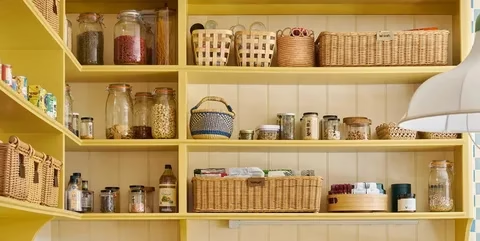How to Pack Kitchen for Moving Without Stress: Step-by-Step Guide
When you’re preparing for a move, one of the first challenges is figuring out how to pack kitchen for moving. Unlike bedrooms or living rooms, kitchens are filled with fragile glassware, heavy appliances, and oddly shaped utensils, making them tricky to handle. That’s why planning ahead is essential. Many people even hire a trusted packing and moving company to ensure their kitchen items are transported safely.
If you’re ready to take on the task yourself, this guide will help you pack efficiently and reduce stress during your move.
Step 1: Start with a Kitchen Declutter
Before you pack, go through your kitchen and decide what stays and what goes. Get rid of:
- Duplicate or broken utensils
- Expired pantry goods
- Appliances you no longer use
Decluttering saves you time, space, and money since you won’t be packing unnecessary items.
Step 2: Gather the Right Packing Materials
Good packing starts with good supplies. Stock up on:
- Small and medium boxes (avoid overpacking large ones)
- Bubble wrap and packing paper
- Strong packing tape
- Plastic wrap to prevent leaks
- Markers and labels
Using the right materials will keep your fragile items safe and make unpacking easier.
Step 3: Pack Fragile Items Carefully
- Plates & Bowls: Wrap each in packing paper and place them vertically in boxes.
- Glasses & Stemware: Use dividers or bubble wrap for protection.
- Bowls: Nest them together with paper between each piece.
Be sure to label these boxes “Kitchen – Fragile” so movers know to handle them with care.
Step 4: Pots, Pans, and Appliances
- Pots & Pans: Stack them by size, separating with paper or towels.
- Lids: Wrap glass lids individually and pack them upright.
- Appliances: Unplug and clean them before packing. Wrap cords securely and place detachable parts in labeled bags.
If you still have the original packaging, use it—it’s the safest option.
Step 5: Packing Pantry & Food Items
- Dry goods: Seal open bags of rice, pasta, or flour with clips or tape.
- Spices: Put spice jars in sealed bags to prevent spills.
- Cans & jars: Use small boxes because they’re heavy.
- Perishables: Eat, donate, or discard refrigerated items since they don’t transport well.
Step 6: Label Everything Clearly
Labeling saves you time later. Write:
- The room (“Kitchen”)
- Contents (“Plates,” “Glasses,” “Pots & Pans”)
- Fragile warnings when necessary
Clear labels also help a packing and moving company load and unload your boxes correctly.
Step 7: Don’t Forget an Essentials Box
Pack a separate “first-night box” with items you’ll need right away, such as:
- A few plates and utensils
- Coffee maker or kettle
- Snacks and easy meals
- Dish soap and sponge
This will save you from searching through multiple boxes after a long moving day.
Step 8: Should You Hire Professionals?
If the thought of packing your kitchen feels overwhelming, consider hiring a packing and moving company. Professionals offer:
- Experience with fragile and heavy items
- High-quality packing materials
- Insurance for extra protection
- A faster and less stressful moving process
For large kitchens or long-distance moves, this option is especially helpful.
Final Thoughts
Knowing how to pack kitchen for moving makes the entire process smoother and less stressful. By decluttering, using the right materials, and following a structured approach, you can protect your dishes, cookware, and appliances during the move. And if you want peace of mind, a professional packing and moving company can handle it all for you.
With the right preparation, your kitchen will be safely packed and ready for your new home.







